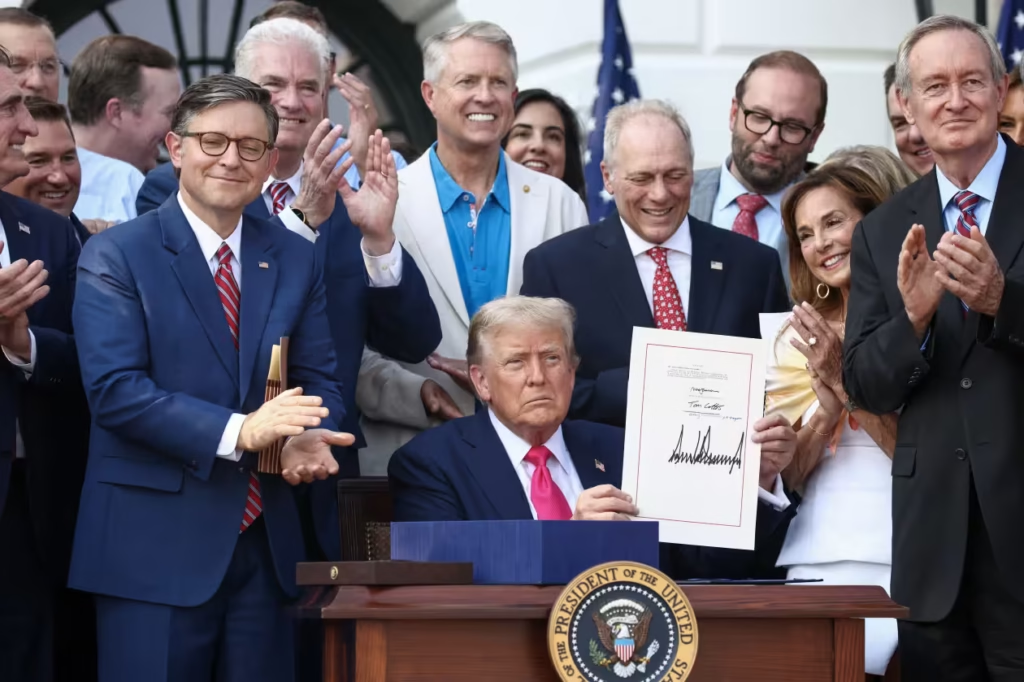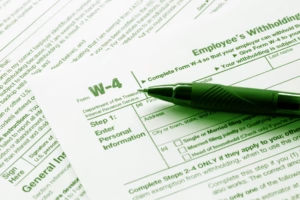On July 4, Republican lawmakers and President Donald Trump sign the One Big Beautiful Bill Act into law. The advantages of the law for high incomes are the subject of a recent analysis.
A new examination of President Donald Trump’s recently passed tax and spending plan by neutral congressional scorekeepers shows that it continues to improve the lives of America’s top 10%.
The Congressional Budget Office reported Monday that the One Big Beautiful Bill Act would benefit this top tier by around $13,600 annually over a ten-year period. That’s more than the CBO’s forecasts from June, before the bill was signed into law, when the office’s researchers estimated that the top 10% would gain about $12,000 a year.
Trump signed the megabill on July 4th after Republican lawmakers pushed it forward.
According to academics on Monday, middle-class households stand to benefit somewhat from the tax cuts as well, perhaps earning between $800 and $1,200 year over the course of the next ten years. That exceeds the $500 to $1,000 CBO prediction from June.
The following prediction remains unchanged from the CBO’s initial June analysis of the law’s beneficiaries and losers: The plan will reduce the social safety net, which will result in financial losses for the poorest Americans. Although the most recent assessment points to a somewhat more moderate influence, that remains the case: According to CBO researchers on Monday, the financial resources of the lowest 10% of households by income would decline by $1,200 annually. In contrast, a $1,600 annual financial damage was projected in June.
According to CBO data, the average “market incomes” of the top 10% of households, which include wages and capital gains, are approximately $700,000. The average market income for the bottom 10% is close to $24,000.
Spending reductions and stricter eligibility standards are part of the law for Medicaid, the federal program run by states that provide low-income individuals health insurance, and the Supplemental Nutrition Assistance Program, formerly known as food stamps.
Over the course of ten years, the nation’s uninsured population will increase by about 10 million, and 7.5 million of those individuals will no longer be covered due to stricter Medicaid eligibility requirements. Opponents claim the cuts go too far and will unjustly deny insurance to qualified individuals, while Republicans claim the cuts are necessary to fight waste, fraud, and abuse in the system.
According to the CBO, its most recent projections of health insurance coverage due to the new law are “subject to considerable uncertainty.”
The bill allows a premium tax credit enhancement to expire at the end of the year. When a person purchases insurance through the exchanges established by the Affordable Care Act, the credit is intended to help cover their medical expenses. When insurers reveal their 2026 premiums this autumn, some of the earliest price increases for health insurance may occur.
The income-tax rates established during Trump’s first presidency were permanently maintained by the statute. It increased the standard deduction and child tax credit, which are both popular with families. Along with a $6,000 deduction for senior citizens, it also introduced other temporary tax benefits, such as deductions for overtime income and tips.
When Republicans highlight the bill’s benefits for regular Americans, they cite clauses like these.
The measure also codified research and expense write-offs for businesses and preserved the multimillion-dollar estate-tax exemption. Additionally, the state and local tax deduction was temporarily tripled to $40,000; this amount will progressively rise until 2029 before falling down to $10,000 in 2030.
Critics claim that the SALT cap primarily benefits wealthy taxpayers in expensive states. The maximum write-off for single filers is $250,000, and for married couples filing jointly, it is $500,000.
Republican lawmakers and the White House have harshly challenged CBO estimates of the bill’s impact, claiming that they understate economic growth expectations.
A request for comment was not immediately answered by the White House.
However, at a time when Republicans are attempting to highlight the advantages of the bill, the figures might increase voter mistrust. According to an AP-NORC poll last month, nearly two-thirds of respondents said the law would benefit the wealthy. 51% of respondents believed it would help the middle class, while 6 out of 10 said it would harm those with lower incomes.





